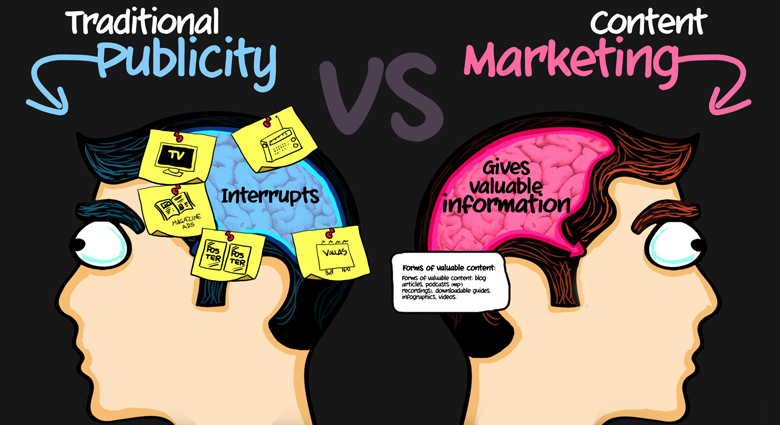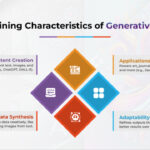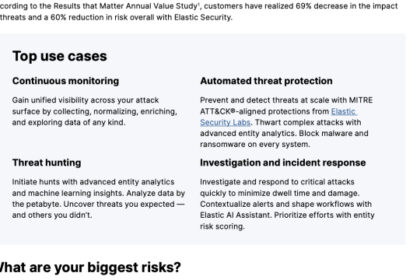In today’s hyper-connected digital landscape, businesses are constantly vying for attention. Amidst the noise, content marketing has emerged as a powerhouse strategy, transforming how brands connect with their audiences, build trust, and drive sustainable growth. It’s no longer enough to simply create content; a well-defined, robust content marketing strategy is the bedrock upon which long-term success is built. Without a clear roadmap, even the most brilliant content can fall flat, failing to reach its intended audience or achieve its strategic objectives.
- Understanding the Core of Content Marketing
- Phase 1: Strategic Planning & Audience Understanding
- Defining Your Target Audience with Precision
- Setting Clear, Measurable Goals & KPIs
- Competitor Analysis: Learning from the Landscape
- Phase 2: Content Creation & Ideation
- Keyword Research & Topic Generation
- Content Formats & Types: Matching Message to Medium
- Crafting High-Quality, Engaging Content
- Phase 3: Distribution & Promotion Strategies
This comprehensive guide will demystify the art and science of content marketing strategy, providing you with an actionable framework to develop, execute, and optimize your efforts for maximum impact and return on investment (ROI). We’ll delve into everything from understanding your audience and setting measurable goals to crafting compelling content, distributing it effectively, and meticulously measuring its performance. Whether you’re a seasoned marketer looking to refine your approach or a business owner just starting your content journey, this article offers the insights and practical steps needed to harness the full potential of content marketing and secure your brand’s future in the digital realm. Prepare to transform your content from a mere expense into your most valuable asset.

Understanding the Core of Content Marketing
At its heart, content marketing is a strategic marketing approach focused on creating and distributing valuable, relevant, and consistent content to attract and retain a clearly defined audience—and, ultimately, to drive profitable customer action. It’s a stark contrast to traditional advertising, which often interrupts; content marketing seeks to attract by providing genuine value and solving problems.

What Exactly is Content Marketing?
Content marketing is not just blogging, social media posting, or video creation in isolation. It’s an overarching strategy that orchestrates all these elements to serve a larger business objective. It’s about understanding your audience’s questions, pain points, and aspirations, then delivering answers and solutions through various content formats. This approach builds trust and credibility over time, positioning your brand as an authority and a go-to resource. Think of it as an ongoing conversation rather than a one-time sales pitch.

Why a Robust Strategy is Crucial for Sustainable Growth
Many businesses jump into content creation without a strategy, often leading to wasted resources and mediocre results. A well-defined content marketing strategy ensures every piece of content serves a purpose, aligning directly with your business goals.
Here’s why a strategy is non-negotiable:
Clarity of Purpose: It defines why you’re creating content, who it’s for, and what* you want it to achieve.
- Targeted Audience Engagement: Ensures your content resonates deeply with your ideal customers, addressing their specific needs.
- Efficient Resource Allocation: Prevents random content creation, focusing efforts on high-impact initiatives.
- Consistent Brand Voice & Messaging: Maintains uniformity across all platforms, strengthening brand identity.
- Measurable ROI: Allows you to track performance against specific KPIs, demonstrating tangible business value.
- Sustainable SEO Performance: Strategic content creation, informed by keyword research, leads to better search engine rankings and organic traffic over time.
Content marketing is a long-term investment. While immediate spikes in traffic can occur, its true power lies in its cumulative effect – building brand equity, fostering customer loyalty, and creating a sustainable pipeline of leads and sales.

Phase 1: Strategic Planning & Audience Understanding
The foundation of any successful content marketing strategy lies in meticulous planning and a deep understanding of your audience. Skipping this phase is akin to building a house without blueprints – it might stand for a while, but it’s destined for instability.

Defining Your Target Audience with Precision
Who are you trying to reach? This isn’t a rhetorical question; the answer dictates every aspect of your content. Developing detailed buyer personas is critical. These semi-fictional representations of your ideal customers go beyond basic demographics.
To create effective buyer personas, consider:
- Demographics: Age, gender, income, location, occupation, education level.
- Psychographics: Interests, hobbies, values, attitudes, lifestyle.
- Pain Points & Challenges: What problems do they face that your product or service can solve?
- Goals & Aspirations: What are they trying to achieve?
- Information Sources: Where do they get their information? (e.g., social media, industry blogs, forums, search engines)
- Objections: What might prevent them from engaging with your content or purchasing from you?
Actionable Tip: Conduct surveys, interviews with existing customers, and analyze website analytics to gather real data for your personas. Give them names and backstories to make them feel real to your content team.
Setting Clear, Measurable Goals & KPIs
Without clear goals, you can’t measure success. Your content marketing goals should align with your overall business objectives and follow the SMART framework: Specific, Measurable, Achievable, Relevant, and Time-bound.
Common Content Marketing Goals:
- Brand Awareness: Increase brand visibility and recognition.
KPIs:* Website traffic, social media reach/impressions, brand mentions, unique visitors.
- Lead Generation: Attract potential customers and gather their contact information.
KPIs:* Lead magnet downloads, form submissions, email sign-ups, MQLs (Marketing Qualified Leads).
- Customer Acquisition & Sales: Convert leads into paying customers.
KPIs:* Conversion rates, revenue attributed to content, sales-qualified leads (SQLs).
- Customer Loyalty & Retention: Keep existing customers engaged and satisfied.
KPIs:* Repeat purchases, customer lifetime value (CLV), content engagement from existing customers, reduced churn.
- Thought Leadership & Authority: Establish your brand as an expert in your industry.
KPIs:* Backlinks, expert citations, social shares, positive sentiment, speaking engagements.
Example SMART Goal: “Increase organic traffic to the blog by 25% within the next 6 months to generate 50 new marketing-qualified leads per month.”
Competitor Analysis: Learning from the Landscape
Understanding what your competitors are doing (or not doing) can provide invaluable insights. This isn’t about copying but about identifying opportunities and differentiating your brand.
Key areas to analyze:
- Content Types: What formats do they use? (blogs, videos, podcasts, infographics).
- Topic Coverage: What topics do they frequently address? Are there gaps they’re missing?
- Content Quality & Engagement: How well-written/produced is their content? How do users interact with it (comments, shares)?
- Distribution Channels: Where do they promote their content? (Social media, email, paid ads).
- Keyword Strategy: What keywords are they ranking for? Tools like SEMrush or Ahrefs can help here.
- Backlink Profile: Who is linking to their content? This can reveal partnership opportunities.
Actionable Tip: Look for “content gaps” – topics your audience is interested in that your competitors aren’t covering effectively. This is where you can establish your unique voice.
Phase 2: Content Creation & Ideation
With a solid strategic foundation, it’s time to bring your content to life. This phase focuses on generating ideas, selecting formats, and ensuring your content is consistently high-quality and engaging.
Keyword Research & Topic Generation
Effective content starts with understanding what your audience is searching for. Keyword research is the process of discovering these terms and phrases.
Steps for robust keyword research:
- Brainstorm Seed Keywords: Start with broad terms related to your business.
- Utilize Keyword Research Tools: Tools like Google Keyword Planner, SEMrush, Ahrefs, Moz Keyword Explorer, and Ubersuggest can reveal search volume, competition, and related keywords.
- Analyze Search Intent: Is the user looking for information (informational), trying to buy something (commercial/transactional), or navigating to a specific site (navigational)? Tailor your content to match intent.
- Target Long-Tail Keywords: These are longer, more specific phrases (e.g., “best content marketing strategy for small businesses” instead of “content marketing”). They often have lower search volume but higher conversion rates and less competition.
- Look at “People Also Ask” and Related Searches: Google’s own suggestions are a goldmine for topic ideas and understanding user questions.
Topic Generation: Beyond keywords, consider industry trends, current events, common customer questions, and your unique expertise. A content calendar is essential here to plan topics, formats, and publication dates.
Content Formats & Types: Matching Message to Medium
The best content strategy utilizes a mix of formats to appeal to different preferences and stages of the buyer’s journey.
Popular Content Formats:
- Blog Posts & Articles: Excellent for SEO, thought leadership, and detailed explanations.
- Videos: Highly engaging, great for tutorials, product demos, interviews, and storytelling. (Suggested Alt Text: “Video marketing strategy showing diverse content formats”)
- Infographics: Visually appealing for complex data or processes.
- Podcasts: Ideal for on-the-go consumption, interviews, and deep dives into niche topics.
- Case Studies: Showcase real-world success stories, building trust and demonstrating value.
- Whitepapers & eBooks: Long-form, authoritative content for lead generation, often requiring an email signup.
- Webinars: Live or recorded online presentations for education and lead nurturing.
- Interactive Content: Quizzes, polls, calculators, and assessments increase engagement and gather user data.
- User-Generated Content (UGC): Reviews, testimonials, social media posts from customers; highly authentic.
Actionable Tip: Don’t try to master every format at once. Start with 2-3 that align best with your resources and audience preferences, then gradually expand.
Crafting High-Quality, Engaging Content
Quality is paramount. Even the best strategy will fail if the content itself is uninspired or unhelpful.
Key elements of high-quality content:
- Value-Driven: Every piece should solve a problem, answer a question, or provide unique insight.
- Originality: Offer a fresh perspective or deeper dive than what’s already out there.
- Readability: Use short paragraphs, clear headings (H2, H3), bullet points, and visuals. Avoid jargon where possible.
- Storytelling: Engage emotions and make your content memorable.
- Strong Voice: Develop a consistent brand voice that resonates with your audience.
- Accuracy & Credibility: Fact-check everything. Cite sources where appropriate.
- Call to Action (CTA): Guide your reader on what to do next (e.g., “Download the full guide,” “Subscribe to our newsletter,” “Book a demo”).
Key Takeaway: Content should always aim to educate, entertain, or inspire.
Phase 3: Distribution & Promotion Strategies
Creating amazing content is only half the battle. If nobody sees it, it won’t achieve your goals. Effective distribution and promotion are vital to maximize your content’s reach and impact.
Multi-Channel Distribution: Reaching Your Audience Everywhere
Your audience isn’t in one place, so your content shouldn’t be either. A multi-channel approach ensures your content gets discovered where your target personas spend their time.
Primary Distribution Channels:
- Your Website/Blog: The central hub for all your content. Ensure it’s user-friendly and mobile-responsive.
- Social Media: Tailor content for platforms like LinkedIn (professional, B2B), Facebook (community, diverse), Instagram (visual







